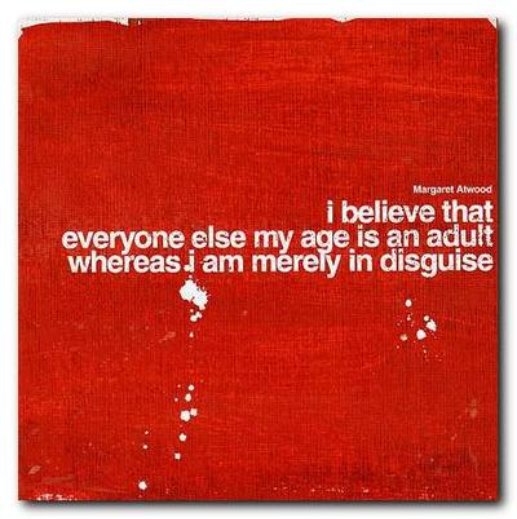
Me too, Margaret. Me too.
:found via ffffound
3.24.2009
joan snyder: narrative painting
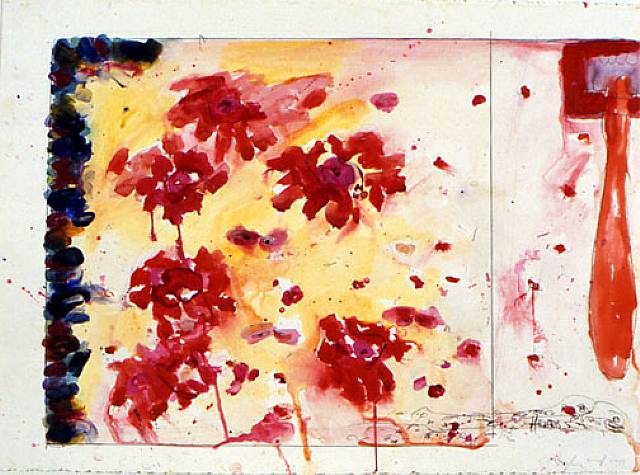
In 1974, after working on her 'stroke' paintings – intense swaths of color painted over pencil-drawn grids – Joan Snyder began in earnest to make paintings which had what she referred to as a female sensibility. "In the early 1970s, women were forming groups and talking about things political and personal, and about our art," says Snyder. She says that these dialogues influenced the art world. "Women’s work helped to pump the blood back into what were dry, cold, and minimal years in the art world in the late 1960s."
Over the four decades of her prolific career, Snyder’s body of work has continually evolved in style and form. Beginning with the stroke paintings, Snyder's works have been essentially narratives of both personal and communal experiences. After abandoning formal grids as the basic structure of her paintings, Snyder’s work became more explicitly gestural and rooted in memory, while at the same time more complex materially.

The MacArthur Foundation profile of Joan Snyder declares that her paintings "mirror her personal experience, but, at the same time, the visual messages she provides through her images convey universal and readily understood emotions. Through a fiercely individual approach and persistent experimentation with technique and materials, Snyder has extended the expressive potential of abstract painting and inspired a generation of emerging artists."
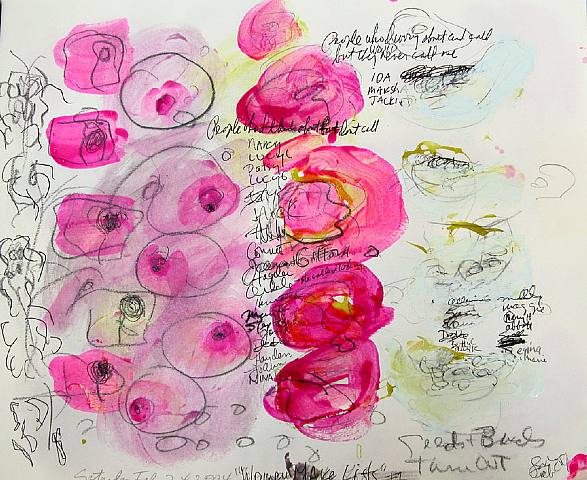
:artnet; nielsen gallery
3.23.2009
i have a bird in spring
I have a Bird in springWhich for myself doth sing —The spring decoys.And as the summer nears —And as the Rose appears,Robin is gone.Yet do I not repineKnowing that Bird of mineThough flown —Learneth beyond the seaMelody new for meAnd will return.. . .Then will I not repine,Knowing that Bird of mineThough flownShall in a distant treeBright melody for meReturn.- Emily Dickinson
:image from seen, june 2004, via liquid sky arts
3.21.2009
the audacity of hope

President Obama's extraordinary, groundbreaking message yesterday to the people and leaders of the Islamic Republic of Iran is amazing. Just amazing. On the occasion of Nowruz, the Iranian new year, President Obama offered Iran a new beginning in diplomatic relations and he committed his administration to a future of honest and respectful diplomacy. A long-awaited, bold, hopeful prelude to renewal. Astounding.
On the occasion of your New Year, I want you, the people and leaders of Iran, to understand the future that we seek. It's a future with renewed exchanges among our people, and greater opportunities for partnership and commerce. It's a future where the old divisions are overcome, where you and all of your neighbors and the wider world can live in greater security and greater peace.
I know that this won't be reached easily. There are those who insist that we be defined by our differences. But let us remember the words that were written by the poet Saadi, so many years ago: "The children of Adam are limbs to each other, having been created of one essence."
With the coming of a new season, we're reminded of this precious humanity that we all share. And we can once again call upon this spirit as we seek the promise of a new beginning.
- President Barack Obama
:image kaitymae via deviant art; message transcription via wsj
3.20.2009
seasonal dissonance

It's spring. Really? Apparently, the weather didn't get the memo from the calendar.
Far from being an arbitrary indicator of the changing seasons, March 20 is significant for astronomical reasons. Today, at precisely 7:44 a.m. EDT, the Sun crossed directly over the Earth's equator. This moment is known as the vernal equinox in the Northern Hemisphere. For the Southern Hemisphere, this is the moment of the autumnal equinox.
Translated literally, equinox means "equal night." Because the sun is positioned above the equator, day and night are about equal in length all over the world during the equinoxes.
Modern astronomy aside, people have recognized the vernal equinox for thousands of years. Many early peoples celebrated for the basic reason that their food supplies would soon be restored. The date is significant in Christianity because Easter always falls on the first Sunday after the first full moon after the vernal equinox. Early Egyptians built the Great Sphinx so that it points directly toward the rising Sun on the day of the vernal equinox. The first day of spring also marks the beginning of Nowruz, the Persian New Year. The celebration lasts 13 days and is rooted in the 3,000-year-old tradition of Zorastrianism.
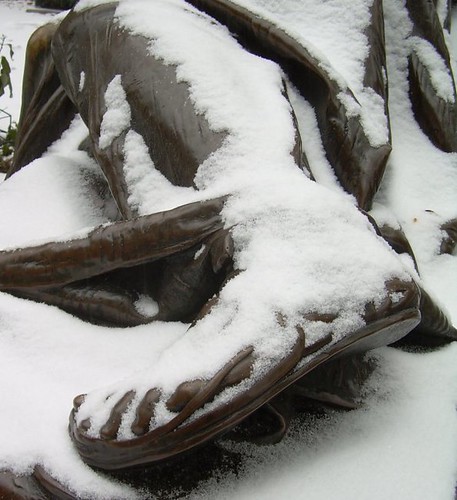
:image d:m, memory statue, straus park, nyc
3.19.2009
interior analysis

In recent years, Dr. Mark Gerald, a 64-year-old psychoanalyst who practices on Manhattan's Upper West Side (what analyst doesn't?), noticed similarities in other analysts' offices. But Dr. Gerald was more struck by the differences. He remembers, for instance, the office of an analyst who dismissed the notion of basic aggression despite the fact that on the mantelpiece behind him sat a row of hideous masks.
Dr. Gerald has taken advantage of his insider status to tackle a subject previously closed to portrait photography: psychoanalysts in their workplaces. To date, he has photographed 55 analysts, more than half of them representing a legendary breed: the New York psychoanalyst.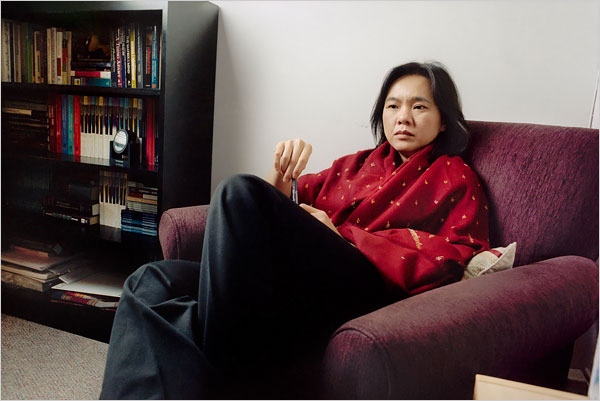
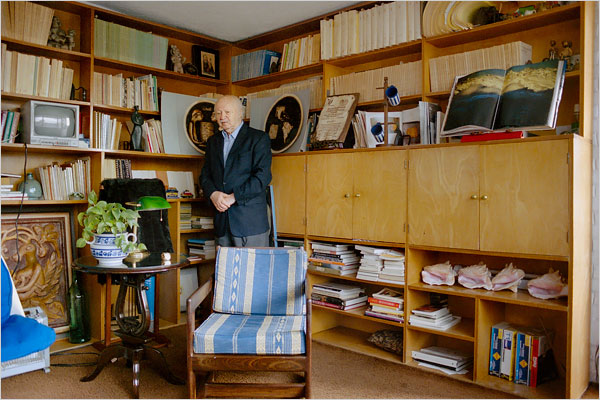

Dr. Gerald's images are on display in an exhibition titled, “In the Shadow of Freud’s Couch: Photographic Portraits of Psychoanalysts in Their Offices,” at Iptar West, the offices of the Institute for Psychoanalytic Training and Research at 140 West 97th Street. The exhibition runs through April 1.

:mark gerald, ph.d., nytimes, new york city; posted by diana murphy
3.10.2009
fixation: farida batool

I'm spellbound.
In Farida Batool’s photographs, lenticular prints (the image changes with the viewing angle) become a metaphor for complex political realities. In Nai Reesan Shehr Lahore Diyan (There Is No Match of the City Lahore) a girl skips rope in front of burned-out buildings — the aftermath of arsons committed by religious extremists.
Farida's image of a Pakistani girl is becoming iconic. The young woman looks as if she captures or typifies some cross between the ordinary and the divine, the ruin and the ritual. The piece partakes of Farida's commitment to the vernacular and to dialogue between the religious and the secular, between the personal and the city. (Monroe Price, Huffington Post)
Batool's image represents a side of Pakistan and its culture that rarely makes it into the American press. Nai Reesan Shehr Lahore Diyan was most recently on view in an exhibit at New York's Aicon Gallery. It closed January 11 (bah!).
This post serves as a virtual birthday greeting to one of the most glorious bloggeuses in all the land: our darling P. Miss WPM's fierce intelligence and kind heart are but two of her many gifts, not to mention her generosity of spirit. And P loves all things South Asia — this one's for you, P. Happiest of Days.
:image courtesy of farida batool and aicon gallery
3.02.2009
someone to watch over you*

Bethesda Fountain is the central feature on the lower level of Bethesda Terrace overlooking The Lake in New York City's Central Park. The pool is centered by a fountain sculpture designed by Emma Stebbins in 1868. Stebbins was the first woman to receive a commission for a major work of art in New York City.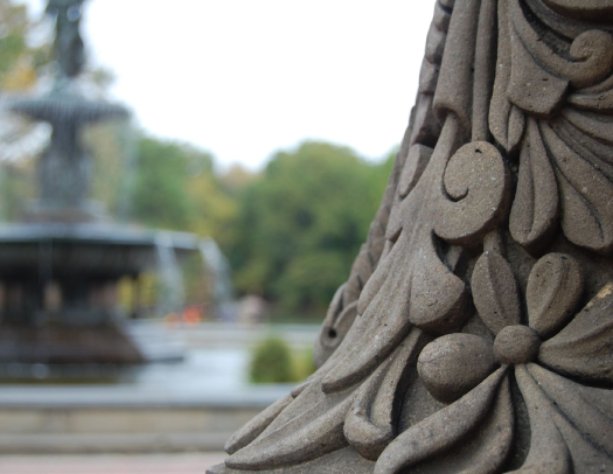
The bronze, eight-foot statue depicts a winged angel touching down upon the top of the fountain, where water spouts and cascades into an upper basin and into the surrounding pool. Beneath her are four four-foot cherubs representing Temperance, Purity, Health and Peace.
The statue is also referred to as The Angel of the Waters, a name taken from the Gospel of John which contains a description of an angel blessing the Pool of Bethesda, giving it healing powers. The angel carries a lily in one hand, representing purity, and with the other hand she blesses the water below.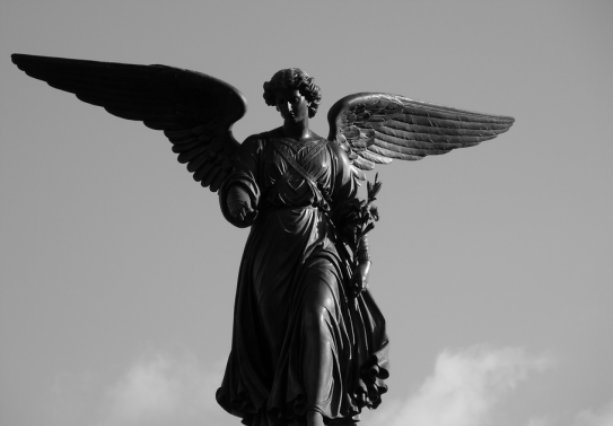
Did you know? The Bethesda Fountain Terrace Arcade has a Minton tile ceiling, the only known example in the world where Minton encaustic ceramic tiles are used in a suspended ceiling. All 15,876 elaborately patterned tiles were removed for cleaning in 1984 and remained in storage for over 20 years.
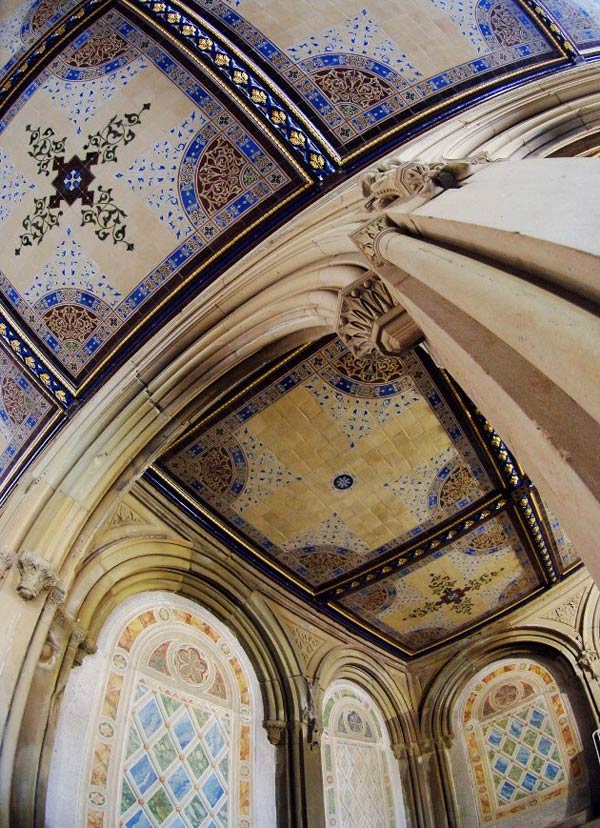
After a $7 million effort funded by the Central Park Conservancy, the treasured tiles were restored and the Terrace reopened in spring 2007. Earlier that year, the NY Times published a cool interactive detailing the restoration of the Arcade. The site is still accessible.

What could be more beautiful, I ask you?
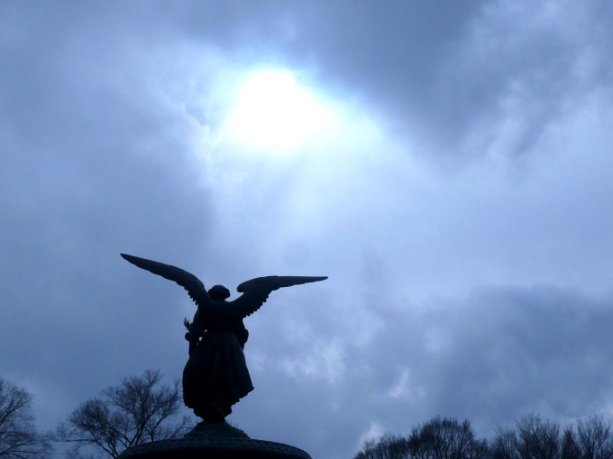
*I intended to offer this post before I pulled up stakes a couple of weeks ago. But, alas, so many of my best intentions meet the same fate: indefinite postponement or abandonment. It's a sorry lot. But here I am (at least for now) - and there's no time like the present to cast out something of beauty. One of my favorite NY spots is at the feet of The Angel of the Waters. She never fails to soothe my weary soul.
:santi-jose, mike knight, jenn german, amanda lyra, tim brauhn, daniel avila, nyc parks & recreation



















































